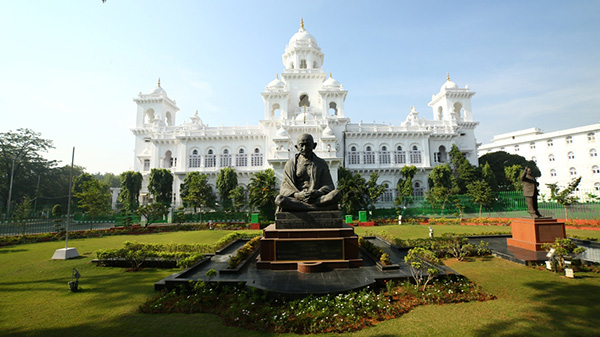Evolving Landscape of Rural India: Role of Mobile Devices

Mobility will play a central role and significantly influence the very evolution of rural India hereafter. Therefore, rather than suggesting a plain list of ‘many ways in which mobile devices can be used in rural areas’, I would like to start with a quick look at the underlying drivers of rural India and then propose a framework to visualize the consequent strategic role that mobile devices can play.
My presentation is set in four parts:
- Aspirations of rural people
- Fundamental characteristics of rural India and how they come in the way of fulfilling those aspirations
- Components of value in general, and their relevance to rural India vis-à-vis the aspirations and characteristics
- The role mobile devices can play in this backdrop
Over the thirty years I have been working in rural India, the most remarkable facet I observed is the transformation of rural mind-set from one of ‘resignation due to deprivation’ to ‘aspiration arising out of empowerment’!
- This transformation occurred as the rural infrastructure improved (especially roads and telecom) and their incomes rose. And the sources of income expanded too – within agriculture diversification helped, while the non-farm activities multiplied (livestock, sales & services in rural markets). Several Government schemes as well as remittances from the kin who migrated to towns brought in more money into rural hands.
- The aspiration is primarily for better basic services (education and health), and superior quality of life (access to consumer goods used in urban India, financial services and entertainment). People, naturally, are also looking for opportunities to step up their incomes further (new livelihood sources and appropriate production inputs are the needs here) to be able to afford such products & services.
However, three characteristics of rural India come in the way of realizing these aspirations…
- The wide geographic dispersion of our villages constrains access to products & services mentioned earlier, in terms of timeliness, quality and cost – if they access at all. Because villages are a long way away from the centres of action (urban areas) where specialists reside or these products & services originate.
- Extreme fragmentation in terms of the size of rural production units reduces their bargaining power when they buy their inputs or sell their output. This is true even for financial services and consumer goods as well, as the ticket size of their purchases is very small. Aggregation can empower them, be it in the form of cooperatives, or self help groups; whether physically or virtually
- Wide heterogeneity in circumstances of the people across rural India requires products and solutions that are personalised to their unique needs. Delivering such solutions is expensive as is, and is further unattractive when the unit volumes and paying capacities are small.
Value has three components. Value Creation, Value Delivery and Value Capture
- By a logical extension of the three characteristics already described, it is obvious that value can be created in rural India by delivering services remotely (overcoming dispersion), by personalizing solutions (that address heterogeneity) and by democratizing access (neutralizing scale / class disadvantage, eg. for poor people & women).
- What is not commonly appreciated is the fact, that the same three characteristics constrain rural people from taking advantage of even the available products & services unless they are delivered as a complete end-to-end solution. For example farm productivity won’t rise unless relevant agri advisory, real-time weather / market information, credit, seed, nutrients, crop protection chemicals etc are all available in a coordinated fashion. So, a well-orchestrated ecosystem is needed for actually delivering the value created by using the ideas mentioned in the first bullet.
- For any enterprise to scale and sustain over time, some of the value created & delivered must be captured for its financial investors. All of you know the famous examples of many dotcom companies that created value for their customers, yet went bust as their business models could not capture enough value for themselves! In case of rural markets, plain vanilla business models that try to capture more share of the small wallets find it difficult to sustain. Innovative models leverage aggregate volumes of these markets and get interested third parties to cross-subsidise (much like the media business), besides capturing some value from the rising incomes (having facilitated such rise in the first instance)
Interestingly, with their wide-ranging capabilities, mobile devices can play a central role in all the three components of value in rural India
- Remote delivery of certain virtual elements in areas like education, health, entertainment; both information & transactions in income generating areas like agriculture, financial services, governance & citizen services; exchanges for employment and matrimonial; social networking platforms etc are all already happening at some basic level using mobile devices by extending the applications designed for Web.
- Additionally, by integrating features like unique identification, crowd sourcing, GPS, GIS, visual mapping, text-to-voice, multi-player collaboration etc., several other value creating applications can be developed which wouldn’t be operationally feasible without mobile devices.
- Finally, with targeted delivery of content & advertisements mobile devices will facilitate the value capture process.
- Remote delivery at door-step, personalized solutions for relevance, virtual aggregation for economies of scale, collaboration for putting end-to-end solutions together, unconstrained access even for the disadvantaged – all so necessary for development of rural India, are now possible due to mobile devices
Let me now illustrate these propositions with some specific uses of mobile devices along these lines
- In education, e-learning will morph into m-learning; further moving to potentially deliver books over mobile devices as the screen sizes expand; with the ability to stay in touch on an ongoing basis, life-long delivery of continuing education is possible
- Last mile access in health services, drawing upon experiences from web based tele-medicine services. Mobile device itself as a medical instrument (eg pulse reader) is not a distant dream.
- Entertainment applications do not need much elaboration; will have instant demand
- Location based information services like Yellow Pages (eg doctors, agri input stores) can morph into mini meta markets
- In agriculture and other livelihood activities, starting with elementary services like information provision – delivered as text or voice – (eg. weather forecasts, market prices) to transactions (eg e-procurement through auctions, negotiations) to sophisticated applications like precision farming through personalized crop management advice (with the ability to click and transmit photographs on one hand, and integration with GIS on the other hand)
- Banking transactions
- m-commerce transactions like railway ticket booking
- Calendar integrated notifications and alerts
- Remote monitoring and activation of farm automation systems (eg irrigation, fertigation), some of which is already happening as a grassroots innovation
- Supply chain management applications in rural marketing (for FMCG, medicines etc) like order taking, promotions, information uploading, remote stock management in rural outlets
- Governance applications like voice / text alerts of Government Scheme; or operational activities like uploading of local data by Village Accountants, Anganwadi Workers, Warehouse Keepers etc
- Citizen reporters generated news and other local information, or even poll based market research, visually mapped by integrating with GPS for reading patterns & movements and re-casting for local action
In short, a mobile device can become a hand held transaction platform, a personalized bank branch, a retail store, a cinema screen, a teacher, a doctor and many such, besides being the good old communication tool. Thereby, playing the role of a key enabler in taking rural people forward with rest of India; delivering the much desired inclusive growth 🙂
PS:
- This blog is a summary of my talk at the Nokia Strategy Summit in Amby Valley (Lonavala) on 29th April 2010.
- I am thankful to so many friends (a record fifty four in all) who shared their thoughts via Twitter, Facebook and LinkedIn as valuable inputs for this talk.










